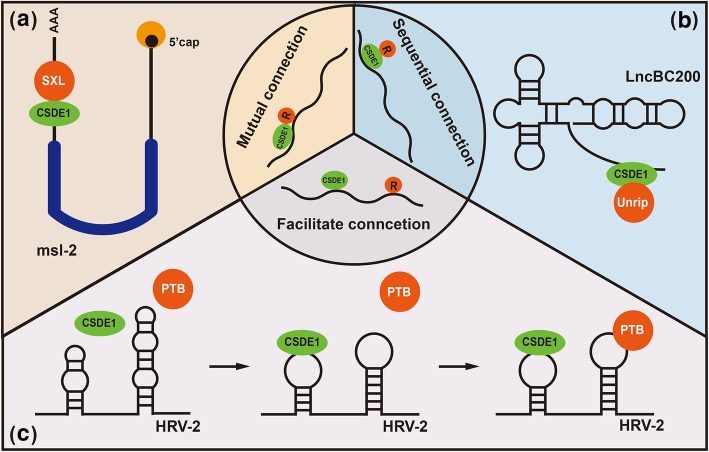Fig. 2.
The “protein-RNA connector” model. The “protein-RNA connector” model can be used to explain the bidirectional role of CSDE1 in translational reprogramming. Based on the interactions among CSDE1, regulators and RNAs, this model can be further divided into three forms: sequential connection, mutual connection and facilitating connection. a For sequential connection, CSDE1 mediates a protein regulator binding indirectly to RNA. As an example, Unrip binds indirectly to lncBC200 via interacting with CSDE1, which enhances the abundance of lncBC200. b For mutual connection, a complex forms among RNA, CSDE1 and protein regulator. As an example, CSDE1, SXL and msl-2 all bind to one another to repress the translation of msl-2. c To facilitate connections, CSDE1 binds to RNA to enable the binding of other regulators. As an example, CSDE1 binds to HRV-2 mRNA and changes its structure to facilitate PTB binding, which promotes the translation of HRV-2

